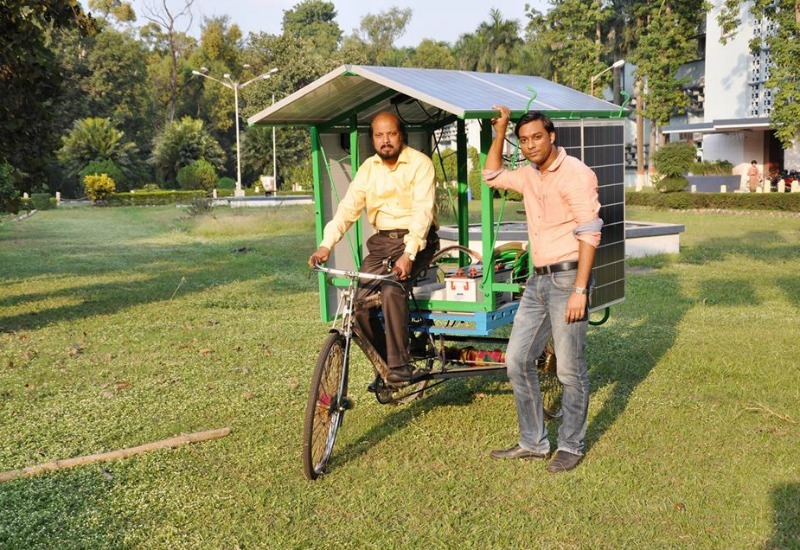Indian scientist Sibnath Maity’s solar tree can produce about 3 KW of power, enough to power five households

In India, where more than 70 per cent of people of 1.34 billion live in remote villages, electricity is a luxury for many. While successive federal and central governments earmark millions of dollars for electrification of villages every year, electrification still remains in paper. Some politicians collude with bureaucrats to siphon off funds meant for electrical infrastructure, by exploiting the illiteracy and ignorance of people.
As a result, many remote villages in the country still remain in the dark. The residents in the hinterland India are still not sure as to when they will see their homes lit up. They are too illiterate to understand that the system they live in is so rot that they may not probably see electricity in this life-time.
Shockingly, this callousness happens at a time when the world has already moved from fossil energy to renewable/green energy.
An Indian scientist has come up with a solution to this perennial problem. He is getting accolades for this invention — solar tree — which he believes will give wings to the dream of millions of villagers who have been deprived of electricity for long.
“More than 70-80 per cent of Indians live in villages, most of which still don’t have access to electricity,” Sibnath Maity, Chief Scientist at the Central Mechanical Engineering Research Institute (CMERI), said. “It is not feasible for the government to do the electrification in villages as it is cost millions of dollars.”
Solar energy is the need of the hour, but people are reluctant to set up solar panels as it is expensive and requires vast expanse of lands. “Solar tree is going turn their fortunes around,” he said.

But what is so special about this solar tree? “You don’t need to fret about space constraints. Our solar panels ‘grow’ on trees. It will not takes more than four square feet of land space to set this up. It can produce about 3 KW of power, which is more than enough to power five households in the vicinity.
This solar tree, which resembles a tree with branches at different tiers, could be squeezed into rooftops and highways, he explained.
Sibnath started working on this project ways back in 2006. His invention remained unnoticed for more than eight years. It eventually saw the light of the day when the central government noticed it. ” I eventually got the recognition when Union Minister Dr. Harshvardhan inaugurated one of my solar trees built in Delhi a few months ago,” he said.
For people in the remote villages in Bihar, Bengal, Rajasthan, the solar tree is a godsend. They can now heave a sigh of relief that they don’t need to walk kilometres to nearby villages to recharge their mobile phones or other electronic devices.
The solar tree is currently priced at INR 5 lakh, which is definitely beyond the reach of a ordinary man who struggles to meet both the ends. If the government subsidises the project, he may be able to sell it at affordable prices.
“The cost depends on the requirement. If you need just a 3KW solar tree, it costs INR 3 lakh (US$ 4,500). Some state governments provide up to 30 per cent subsidy for alternative energy setups, while some others 80 per cent. On the top of it, central government also provides some grants. So it is not going to burn a big hole in people’s pocket,” he explains.
A few months ago, he got a request from a farmer in Berhampur in Odisha to set up a solar tree, capable of producing 5KW of power for him to run a motor pump in his farm. Sibnath hopes to see more such requests come in.
As of today, Maity has erected six solar trees in different villages in India.
The solar tree is creating waves not just in India, but in other parts of Asia too. He received queries from places like Lakshadeep and Andaman Nicobar (two Indian archipelagos), where land availability is a huge issue.

“Unlike other solar panels, we promise 100 per cent efficiency. Plus, it does not need regular maintenance and has a long life. We want to see the entire India illuminated in the near future,” concluded Maity, who had previously designed a portable solar pump and a three-wheeler solar vehicle.
Also Read,
Manohar Parrikar says innovation fund to encourage defence startups


















































